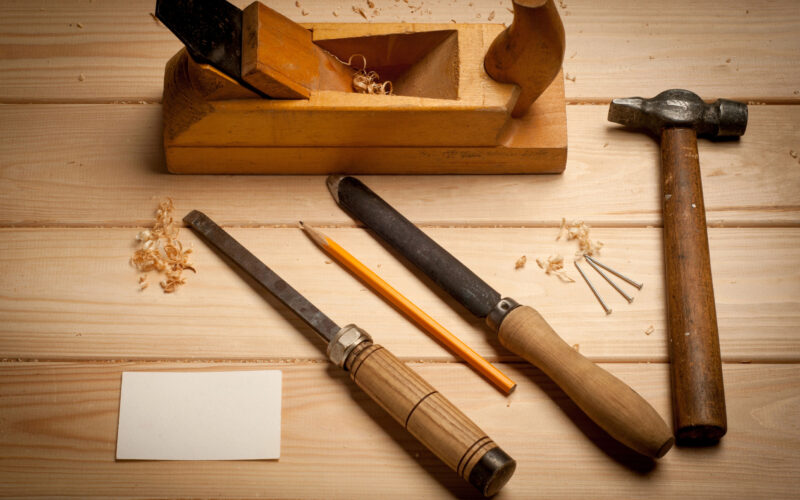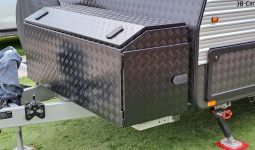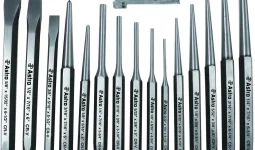Carpenters rely on a variety of tools to bring their projects to life. From shaping wood to creating intricate designs, the right tools can make all the difference in the quality and efficiency of their work.
Whether you’re a seasoned professional or just starting out, having the best tools at your disposal is key to success in carpentry.
The most essential carpentry tools include chisels, tape measures, and handsaws.
These basic items form the foundation of any carpenter’s toolkit, allowing for precise measurements, accurate cuts, and detailed woodworking.
Beyond these basics, there are many specialized tools that can enhance a carpenter’s abilities and streamline their workflow.
Choosing the right tools can be overwhelming with so many options available.
This guide will explore some of the top tools for carpenters, considering factors like durability, versatility, and value for money.
By the end, you’ll have a better understanding of which tools might be worth adding to your own collection.
Hammer

A hammer is an essential tool for any carpenter. It’s used for driving nails, breaking apart materials, and general construction tasks.
There are different types of hammers suited for carpentry work. The claw hammer is versatile and common.
It has a flat striking face on one side and a curved claw on the other for removing nails.
For heavy-duty framing work, carpenters often use framing hammers. These have a larger head and longer handle for more power.
Some popular framing hammer options include:
- Estwing E3-28SM 28 oz. Long Handle Framing Hammer
- Vaughan California Framing Hammer 19oz Milled Face
- Stiletto TI14MC 14 Ounce Framing Hammer
The hammer’s weight is important. Heavier hammers (20-32 oz) provide more force but can cause fatigue. Lighter hammers (16-20 oz) offer better control for precision work.
Handle materials vary. Wood handles absorb shock well but can break. Fiberglass is durable and reduces vibration.
Steel handles are very strong but transmit more shock to the user’s hand.
When choosing a hammer, carpenters should consider the type of work they do most often. Comfort, durability, and price are also key factors to weigh.
Tape Measure
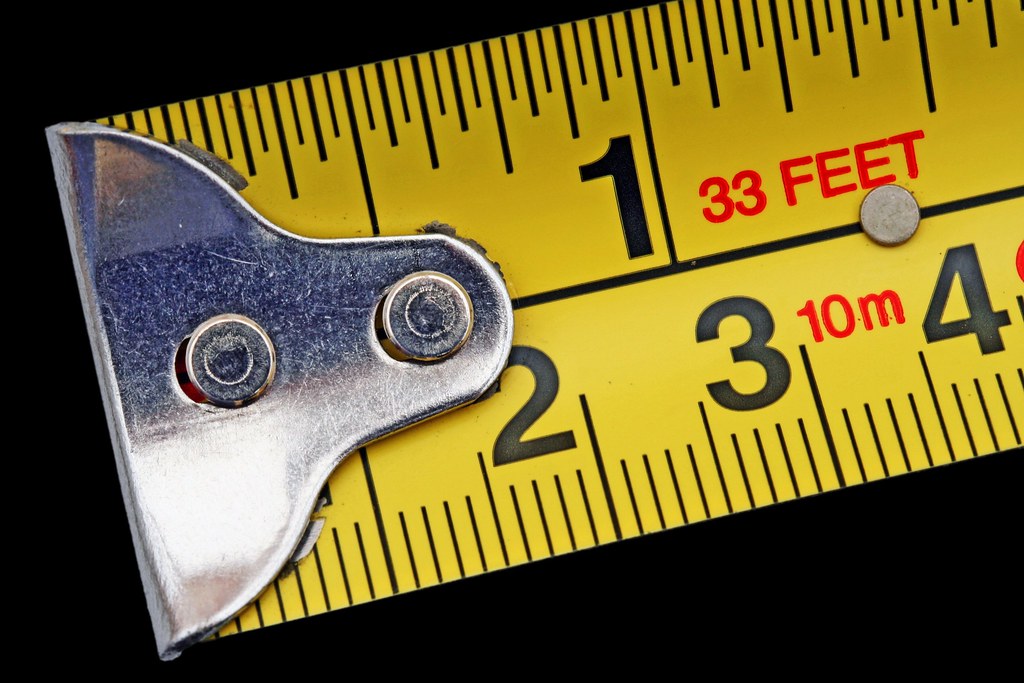
A tape measure is an essential tool for carpenters. It allows for precise measurements of materials and spaces.
Tape measures come in various lengths, but 25-foot models are popular for most carpentry work.
Some top tape measures for carpenters include the Crescent Lufkin Shockforce Nite Eye G2 and the DeWalt Tough Series. These offer durability and easy-to-read markings.
Key features to look for in a quality tape measure:
- Strong blade with standout length
- Clear, large numbers
- Durable case
- Reliable locking mechanism
- Hook that grips surfaces well
Magnetic tape measures can be useful for metal framing work. They stick to steel surfaces, allowing for one-handed measuring.
Some carpenters prefer tape measures with fractional markings. These show 1/8, 1/4, 3/8 and other fractions clearly on the blade. This can speed up calculations on job sites.
For high-tech options, laser tape measures offer precise digital readings. These work well for long distances or hard-to-reach spots.
Circular Saw
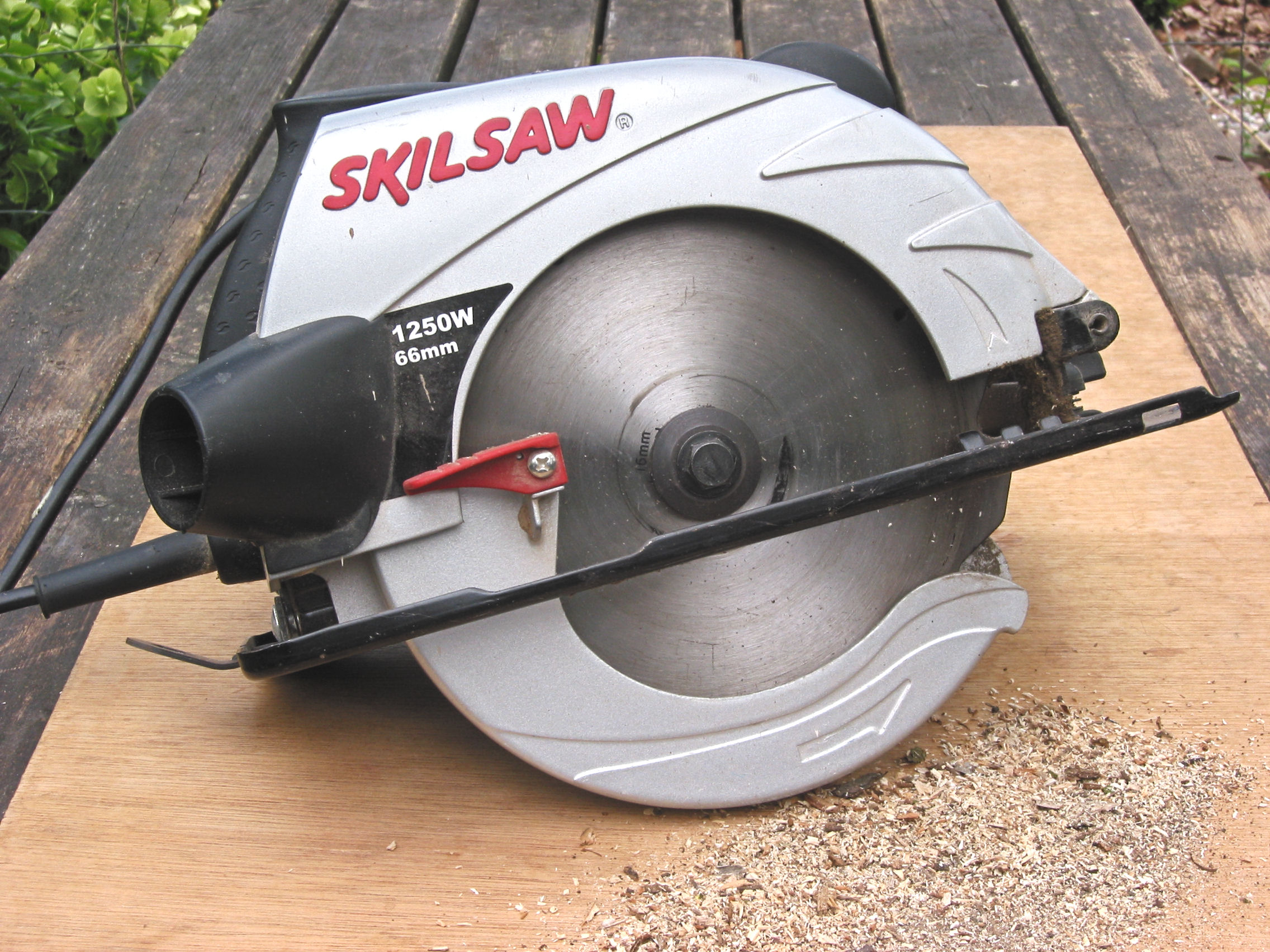
A circular saw is a key tool for carpenters. It cuts wood quickly and accurately. This power tool has a round blade that spins fast.
Circular saws come in different sizes. The 7 1/4-inch blade is common for most jobs. Smaller 5 1/2-inch saws are good for light work.
There are two main types:
- Sidewinder: The motor is next to the blade
- Worm drive: The motor is behind the blade
Sidewinders are lighter and easier to use. Worm drives have more power for tough cuts.
Some features to look for in a circular saw:
- Blade guards for safety
- Depth adjustment for different wood thicknesses
- Bevel adjustment for angled cuts
- Laser guide for straight lines
Cordless saws offer more freedom to move. But corded saws give steady power for big jobs.
The Makita 5007 Magnesium is a top choice for many carpenters. It’s strong and light. For tight spaces, the DEWALT 20-Volt is a good compact option.
When using a circular saw, always wear safety gear. Keep the blade sharp for clean cuts. Practice on scrap wood to improve your skills.
Power Drill
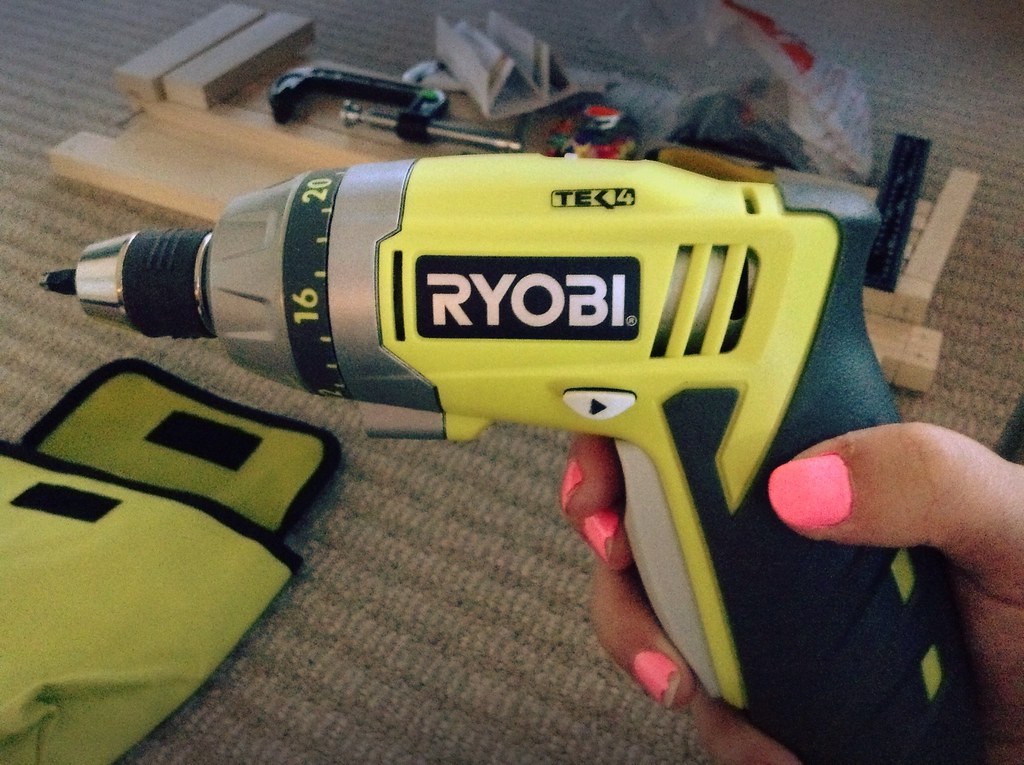
A power drill is a must-have tool for any carpenter. It’s versatile and saves time on many tasks.
Power drills come in corded and cordless varieties. Cordless drills offer more mobility but may have less power. Corded drills provide consistent power but limit movement.
Key features to look for in a power drill include:
- Chuck size (3/8″ or 1/2″)
- Variable speed control
- Reversible direction
- Clutch settings for torque control
Cordless drills are popular among DIYers and professionals alike. They allow for easy movement around the worksite.
Many power drills have multiple functions. Some can switch between drilling and driving modes. Others offer hammer drill functionality for masonry work.
When choosing a power drill, consider the types of projects you’ll be working on. Heavier-duty tasks may require more power and durability.
Battery life is important for cordless models. Look for drills with long-lasting lithium-ion batteries. Some brands offer interchangeable batteries across their tool lines.
A good power drill can last for years with proper care. Regular maintenance includes keeping the chuck clean and lubricating moving parts.
Chisels
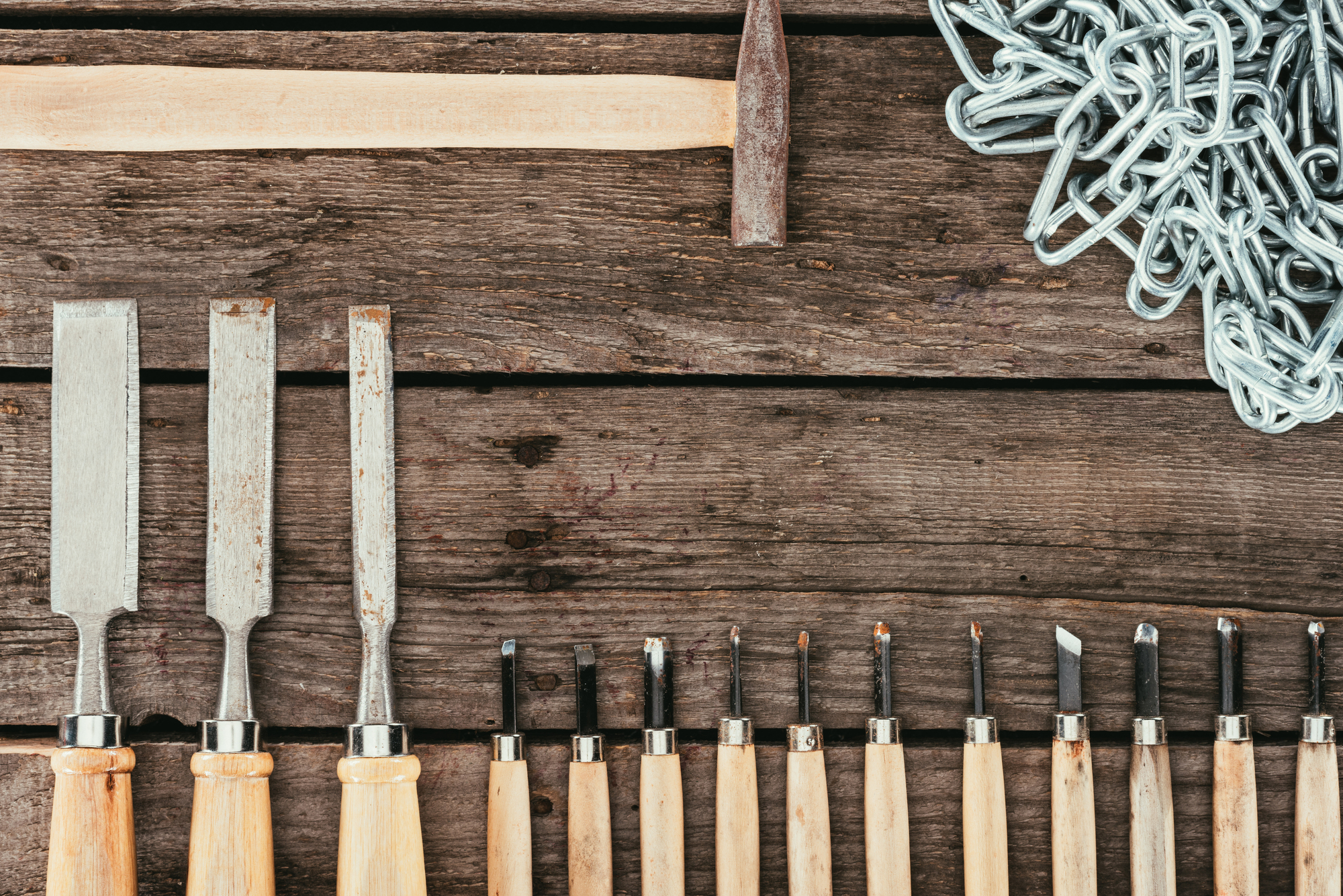
Chisels are essential tools for carpenters. They come in various sizes and shapes for different woodworking tasks.
Wood chisels typically have sharp steel blades and handles made of wood or plastic. The blade cuts and shapes wood with precision.
Common types of chisels include:
- Bench chisels
- Mortise chisels
- Paring chisels
- Carving chisels
Blade widths range from 1/8 inch to 2 inches or more. Carpenters often use sets with multiple sizes.
Quality matters for chisels. Brands like Narex and Irwin are known for making durable, easy-to-use chisels.
Chisels need regular sharpening to work well. A sharp chisel cuts cleaner and is safer to use than a dull one.
When choosing chisels, carpenters should consider:
- Blade material (usually high-carbon steel)
- Handle comfort
- Intended use (general carpentry, fine woodworking, etc.)
- Budget
Some chisel sets come with extras like sharpening stones or storage cases. These can be helpful for maintaining the tools.
With proper care, a good set of chisels can last a carpenter for many years.
Speed Square
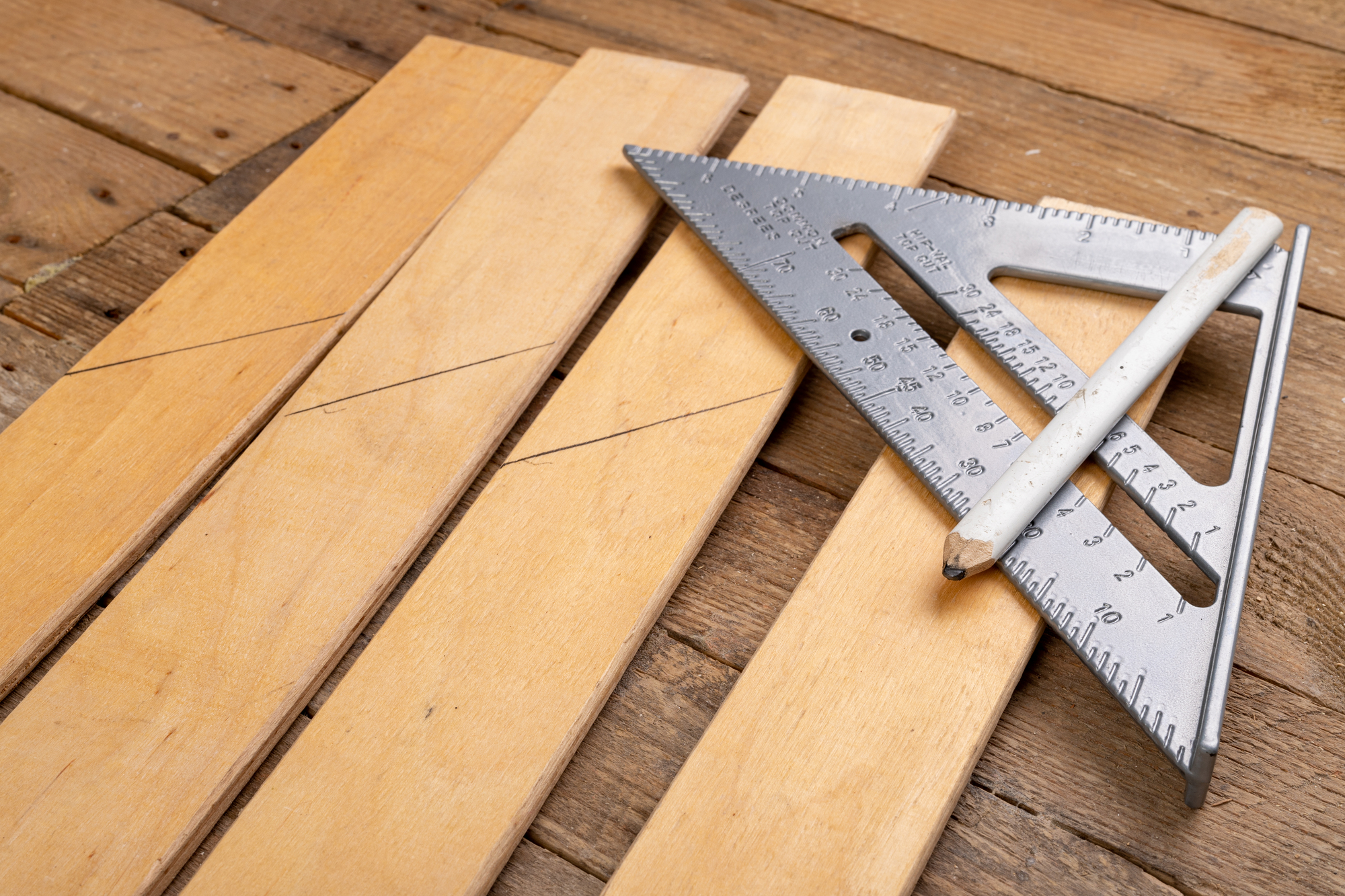
A speed square is a versatile tool for carpenters. It’s shaped like a right triangle and made of metal or plastic.
Speed squares help with marking and measuring angles. They’re useful for framing, roofing, and general carpentry tasks.
The Swanson Tool Co Speed Square is a popular choice. It’s known for its durability and ease of use.
Most speed squares are 7 inches long. This size fits easily in a tool belt. Some brands offer 12-inch versions for bigger projects.
Key features of a good speed square include:
- Clear markings
- Rust resistance
- Durable material
- Comfortable grip
Some speed squares come with extra features. The Beslands 7-inch Rafter Square has a built-in level. This can be handy for ensuring straight cuts.
For smaller jobs, a mini speed square might be enough. These are more compact and easier to carry.
When choosing a speed square, consider the material. Metal squares last longer but can be heavier. Plastic ones are lighter but may not be as durable.
Price can vary, but many good options are affordable. It’s a tool that offers great value for its cost.
Spirit Level

A spirit level is a key tool for carpenters. It helps ensure surfaces are straight and true.
Bubble levels come in different sizes. A 24-inch model works well for most home projects. Longer 4-foot levels suit large surfaces.
Spirit levels have small vials filled with liquid. A bubble in the vial shows if something is level. When the bubble sits between two lines, the surface is even.
Some features to look for in a good spirit level:
- Sturdy frame (aluminum or plastic)
- Clear, easy-to-read vials
- Accuracy to 0.5mm/m or better
- Shock-absorbing end caps
Digital levels offer extra features. They give precise angle readings and can be easier to use in low light.
Proper use of a spirit level is important. Place it firmly on the surface. Check the reading from eye level for best accuracy.
Carpenters often need more than one level. A torpedo level works well in tight spaces. Box levels help with framing and larger projects.
Regular cleaning and careful storage keep spirit levels working well. Avoid dropping them to maintain accuracy.
Combination Square
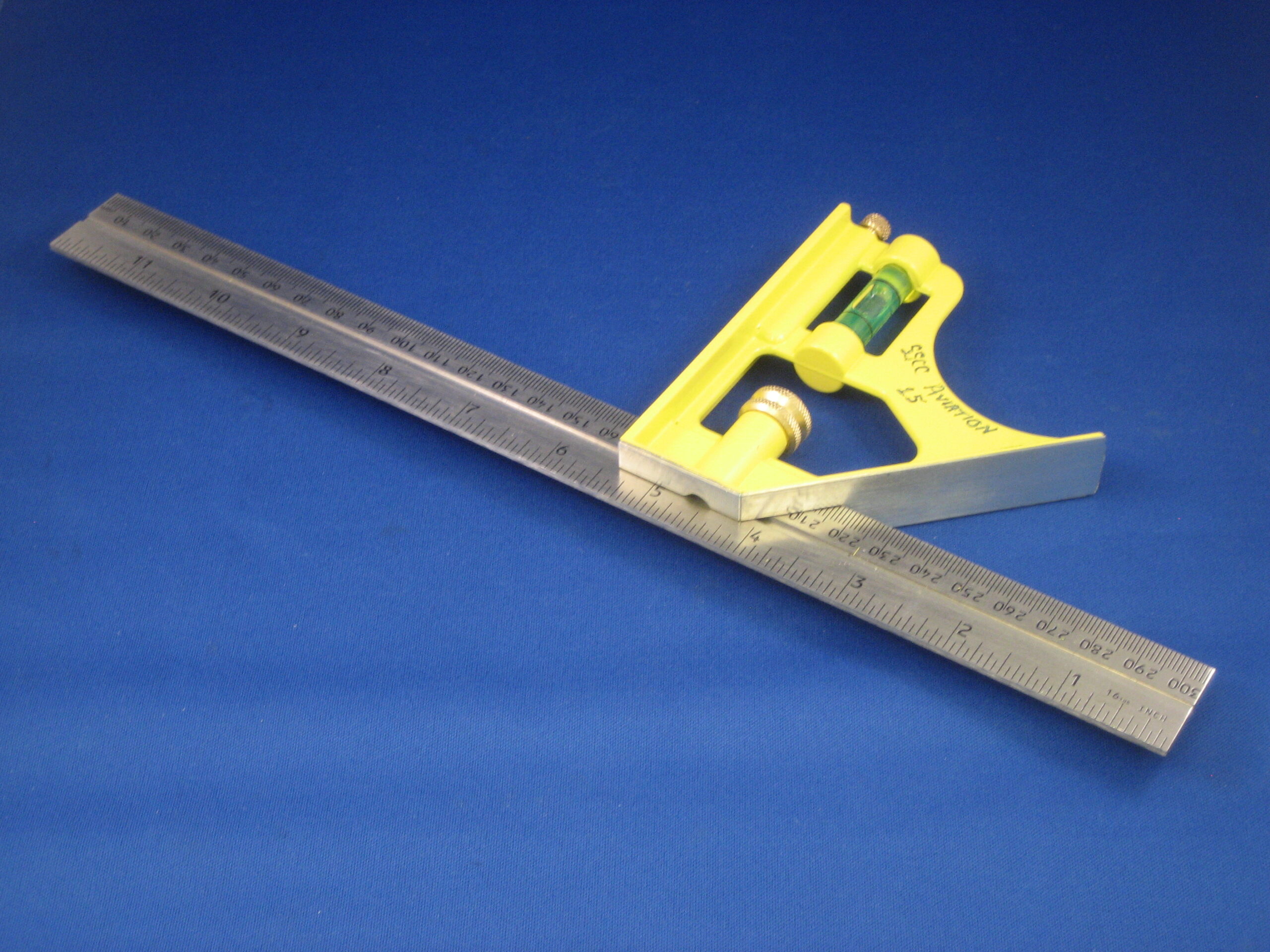
A combination square is a versatile tool that carpenters often rely on. It helps with measuring, marking, and checking angles.
Most combination squares have three main parts: a ruler, a head, and a spirit level.
The ruler is usually 12 inches long and has markings in both inches and centimeters.
The head of a combination square can slide along the ruler. It has a 90-degree edge and a 45-degree edge.
These edges are useful for marking and checking right angles and 45-degree angles.
Many combination squares come with extra features. Some have a built-in level vial to check if surfaces are level. Others may include a scriber for marking wood or metal.
When choosing a combination square, look for one that is accurate and durable.
Cast zinc and stainless steel models are often good choices. Make sure the markings on the ruler are clear and easy to read.
Carpenters use combination squares for many tasks. These include:
- Measuring lengths
- Marking cut lines
- Checking angles
- Testing if surfaces are flat or level
- Scribing parallel lines
A good combination square can make a carpenter’s work more precise and efficient. It’s a tool that belongs in every carpenter’s toolbox.
Hand Saw
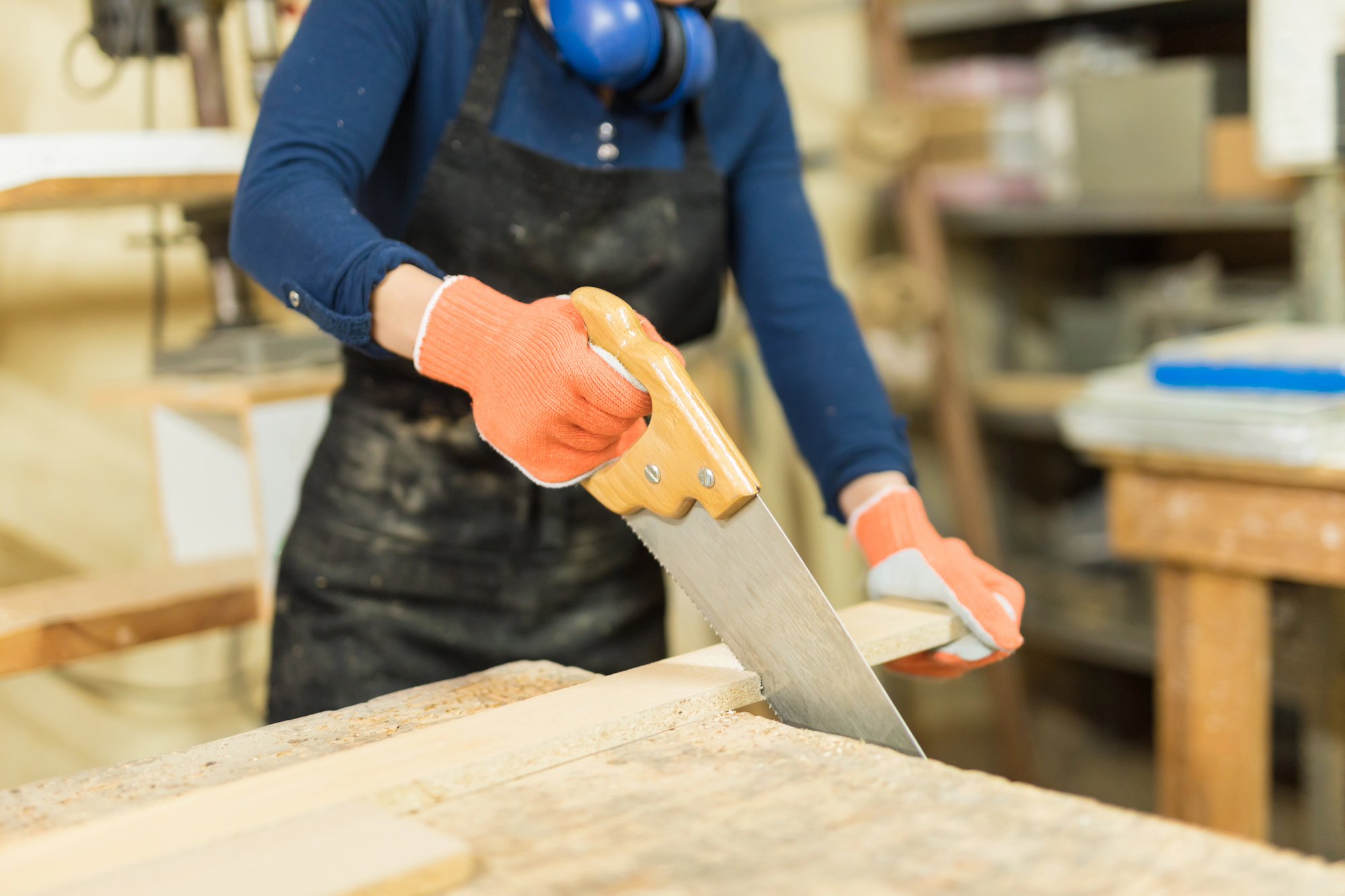
A hand saw is a key tool for carpenters. It allows precise cuts without needing power. Hand saws come in different types for various tasks.
The blade length of a hand saw typically ranges from 7 to 14 inches. Common sizes are 10 and 12 inches. Longer blades help make bigger cuts.
Hand saws have different tooth patterns on their blades. These patterns affect the cut’s smoothness.
Some popular patterns are:
- Rip cut: For cutting along wood grain
- Crosscut: For cutting across wood grain
- Coping: For fine, detailed cuts
When choosing a hand saw, consider the handle comfort. A good grip helps control and reduces fatigue during long jobs.
Some hand saws work well for many tasks. The Shark Corp 10-2312 Carpentry Saw is one such versatile option.
It can handle carpentry, DIY projects, and even tree branch trimming.
To keep a hand saw in good shape, store it in a dry place. Use a blade guard to protect the teeth.
Apply lubricant to prevent rust. These steps help the saw last longer and cut better.
Clamps
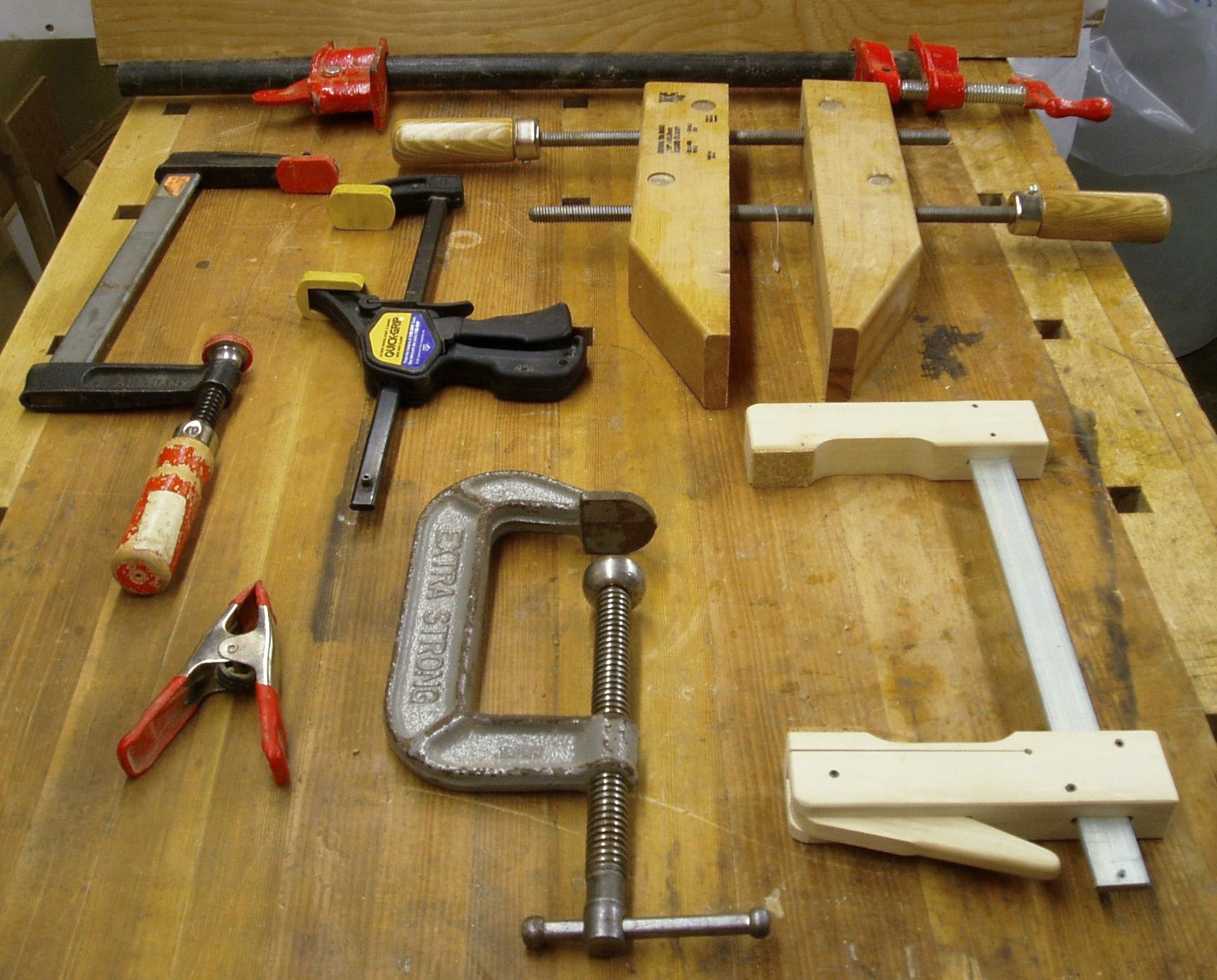
Clamps are essential tools for carpenters. They hold pieces of wood together while glue dries or during cutting and drilling.
There are several types of clamps used in woodworking:
- Bar clamps
- C-clamps
- Spring clamps
- Pipe clamps
Bar clamps are versatile and come in various sizes. They’re great for large projects and can apply strong pressure.
C-clamps are sturdy and ideal for holding work to a bench. They’re available in different sizes to suit various tasks.
Spring clamps are quick and easy to use. They’re perfect for light-duty jobs and temporary holds.
Pipe clamps are budget-friendly options for larger projects. They can be customized to different lengths by changing the pipe.
When choosing clamps, consider:
- The size of your projects
- The amount of pressure needed
- How often you’ll use them
- Your budget
It’s a good idea to have a mix of clamp types in your toolkit. This ensures you’re prepared for various woodworking tasks.
Miter Saw
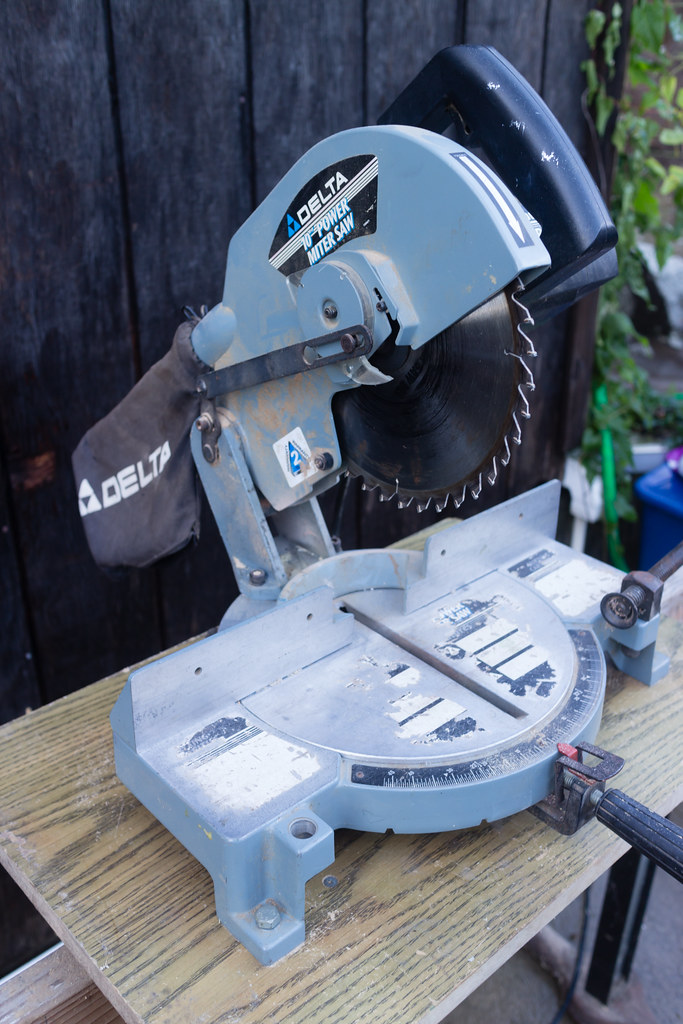
A miter saw is a key tool for carpenters. It makes precise angled cuts in wood and other materials.
This saw sits on a table or stand and has a circular blade that pivots down to cut.
There are different types of miter saws:
- Standard miter saw
- Compound miter saw
- Sliding compound miter saw
The DeWalt DWS716XPS sliding miter saw is highly rated for its accuracy and power. It can handle larger pieces of wood than non-sliding models.
For those on a budget, the Skil MS6305 dual-bevel sliding miter saw offers good value. It has many features of more expensive saws at a lower price point.
Blade size is an important factor when choosing a miter saw. Common sizes are:
- 7 1/4 inches
- 8 1/2 inches
- 10 inches
- 12 inches
Larger blades can cut wider pieces of wood in one pass. The Bosch CM8S 8-1/2 inch sliding miter saw offers a good balance of size and cutting capacity.
When using a miter saw, safety is crucial. Always wear eye protection and follow the manufacturer’s guidelines.
Keep hands away from the blade and use clamps to secure the workpiece when possible.
Table Saw

A table saw is a key tool for carpenters. It cuts wood with precision and speed. Table saws come in different sizes and types.
Portable jobsite table saws are popular for their mobility. They’re easy to move between work areas. These saws often have stands with wheels for quick setup.
Benchtop models are smaller and lighter. They’re good for home workshops or small jobs. The Ryobi 8-1/4-inch Benchtop Table Saw is a solid choice for beginners.
Contractor saws are bigger and more powerful. They’re meant for heavier use. These saws can handle larger pieces of wood.
Safety is important when using a table saw. Some models have special safety features. The SawStop table saw stops the blade if it touches skin.
Key features to look for in a table saw:
- Blade size (usually 10 inches)
- Rip capacity
- Motor power
- Dust collection system
- Fence quality
Table saws can make rip cuts, cross cuts, and angled cuts. They’re versatile tools for many carpentry projects.
Block Plane
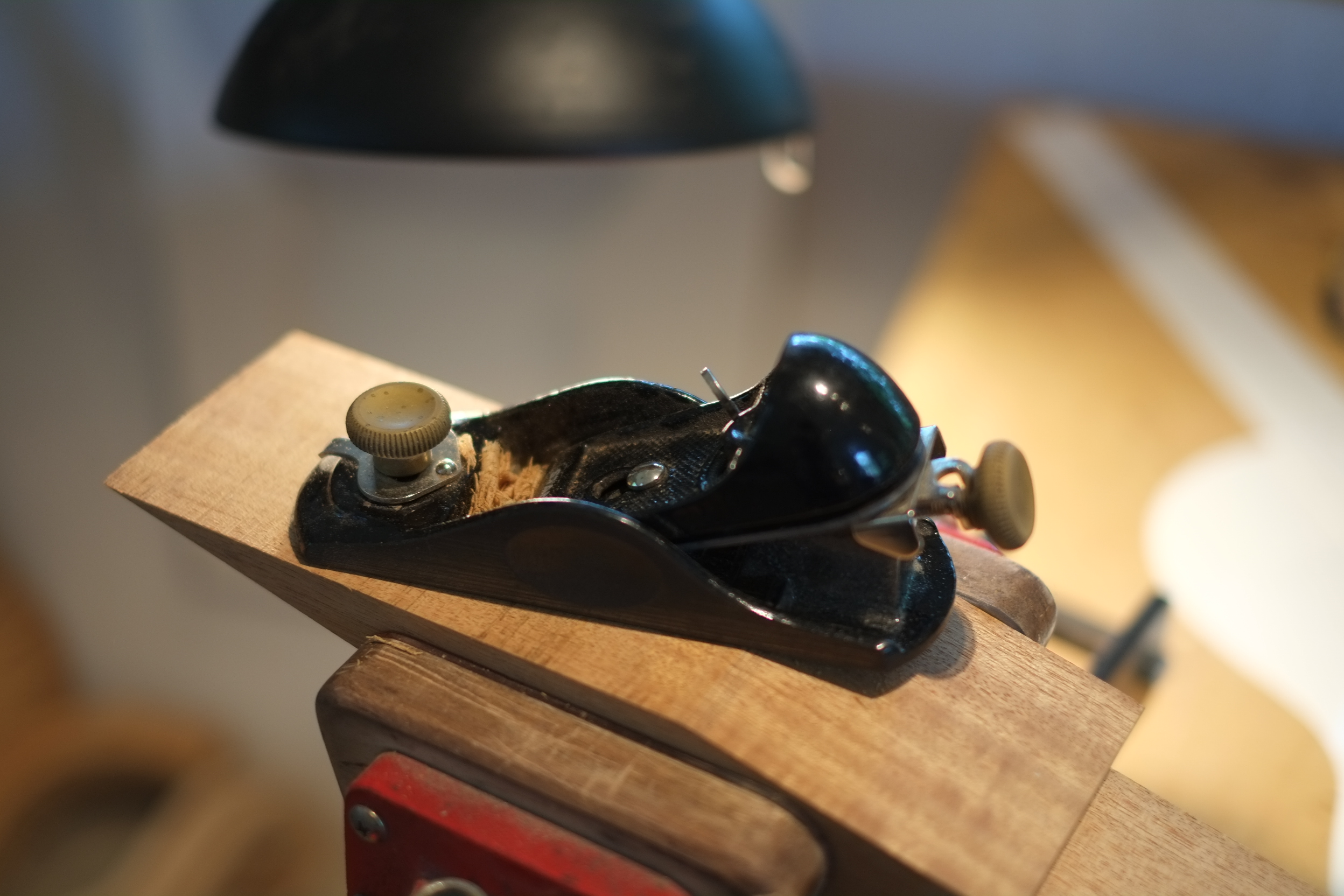
A block plane is a small, versatile hand tool that carpenters often use for fine woodworking tasks.
It’s designed to trim and smooth wood surfaces with precision.
Block planes typically measure 6 to 7 inches long. They have a low-angle blade that cuts across wood grain effectively.
These tools excel at:
- Smoothing end grain
- Chamfering edges
- Making small adjustments to joints
- Removing mill marks
Block planes come in various styles. Low-angle models are good for end grain work. Standard-angle versions work well for general tasks.
Key features to look for in a quality block plane include:
- Flat sole
- Easy depth-of-cut adjustment
- Adjustable throat
Block planes are lighter and more portable than bench planes. This makes them ideal for quick touch-ups and detail work.
When choosing a block plane, avoid cheap hardware store versions. Look for tools from reputable manufacturers to ensure good performance.
With practice, a block plane becomes an essential tool for precise carpentry work.
It allows for fine control and smooth results in wood shaping tasks.
Woodworking Mallet
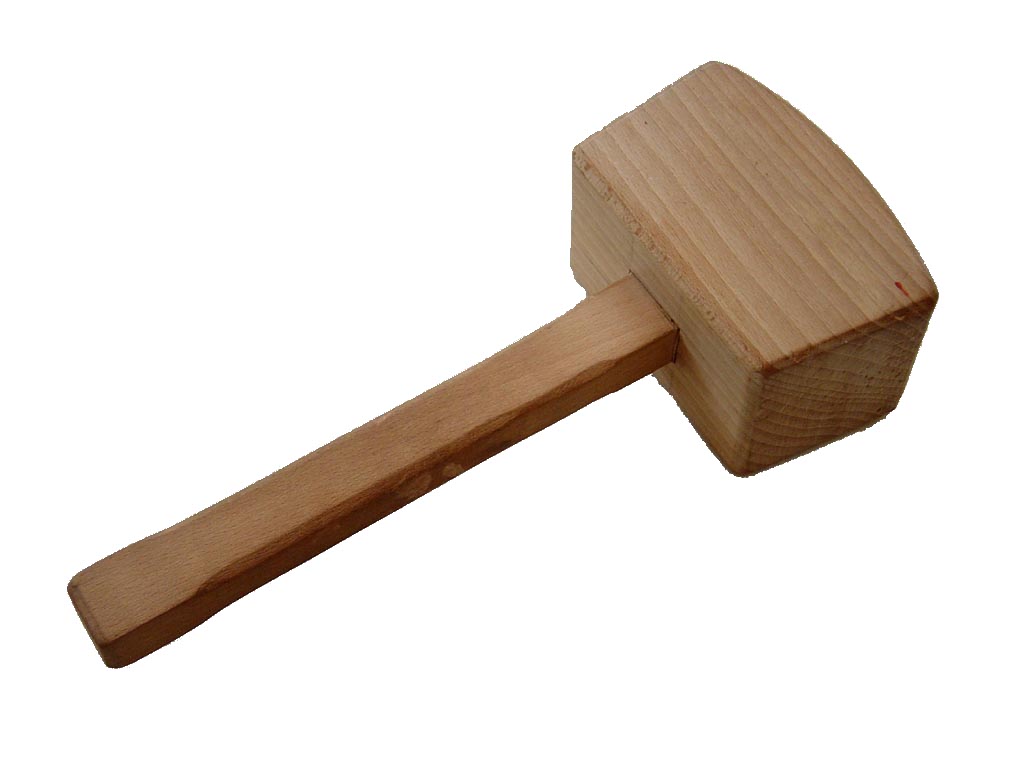
A woodworking mallet is an essential tool for carpenters and woodworkers.
It’s used to strike chisels, shape wood, and assemble joints without damaging the workpiece.
Mallets come in different materials, but wood is popular for its gentle impact. Beech wood mallets are common due to their durability and shock-absorbing properties.
The head shape varies, with cylindrical and rectangular being the most common.
Cylindrical mallets offer more striking surface area, while rectangular ones provide better control for precision work.
Weight is an important factor. Heavier mallets deliver more force, while lighter ones allow for better control. Carpenters often have multiple mallets for different tasks.
Some key features to consider when choosing a mallet:
- Handle comfort
- Head material
- Weight distribution
- Overall size
Joiners’ mallets are a specific type favored by many woodworkers. They typically have a larger head for increased striking power.
Carpenters should avoid using metal hammers on chisels, as this can damage the chisel handles. A wooden mallet is the preferred tool for this task.
Mallets can be store-bought or handmade. Some woodworkers enjoy crafting their own, customizing the size and weight to their preferences.
Jigsaw
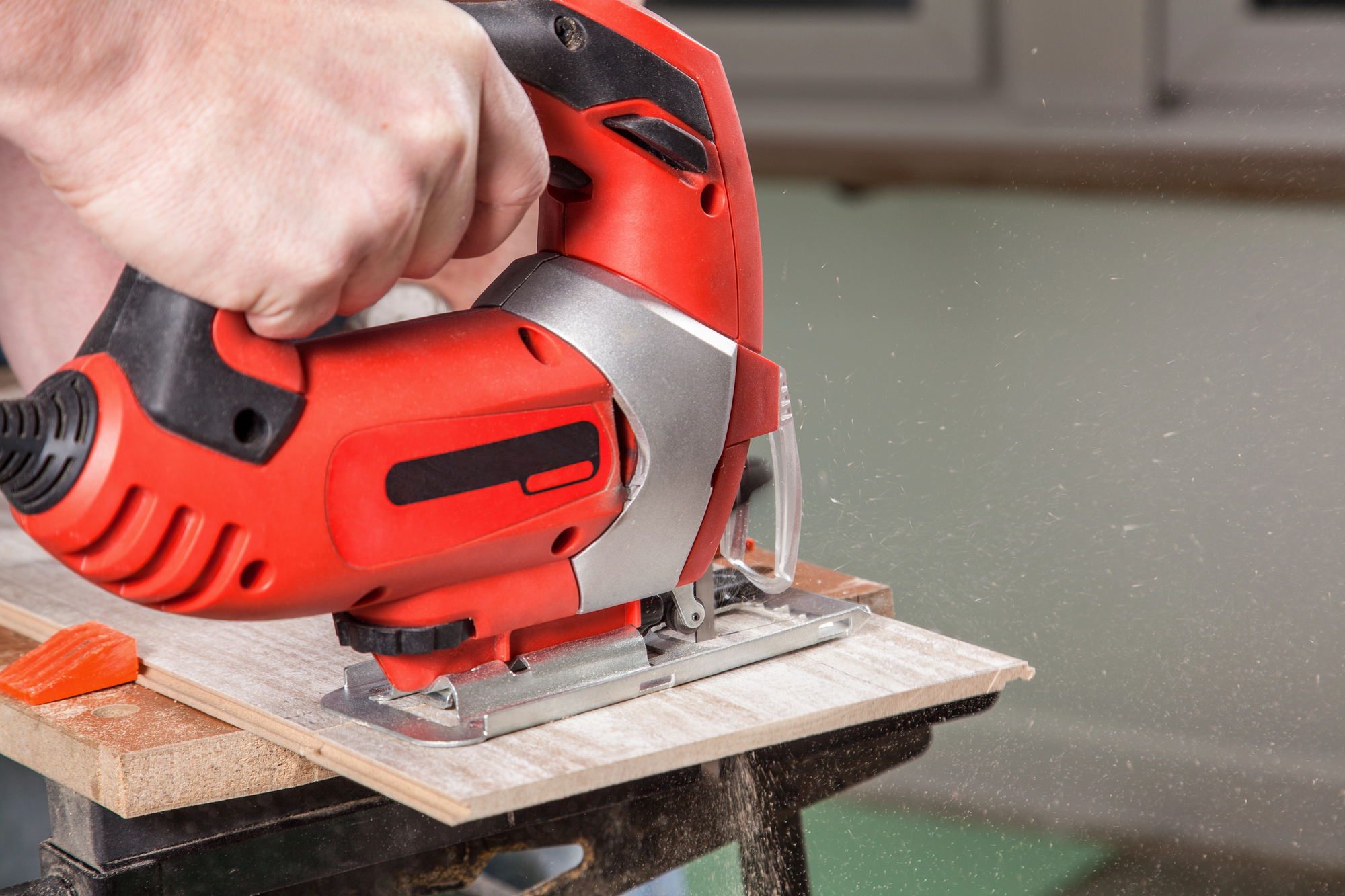
A jigsaw is a versatile power tool that carpenters often rely on. It can make straight, curved, and beveled cuts in wood, metal, plastic, and other materials.
Jigsaws come in corded and cordless versions. Corded models offer consistent power, while cordless ones provide more mobility on job sites.
Key features to look for in a quality jigsaw include:
- Adjustable speed settings
- Orbital action for faster cutting
- Tool-free blade change system
- Dust blower to keep the cut line visible
Festool Carvex jigsaws are known for their accuracy and control. Their Triple Blade Guidance system helps prevent blade drift during cuts.
For woodworkers, the Makita 6.5 amp jigsaw is a popular choice. It offers the power and precision needed for intricate cuts in wood projects.
When choosing a jigsaw, consider factors like:
- Intended use (wood, metal, etc.)
- Frequency of use
- Budget
- Desired features
A good jigsaw can make curved cuts, create cutouts, and tackle irregular shapes with ease. This makes it an essential tool for many carpentry tasks.
Nail Gun
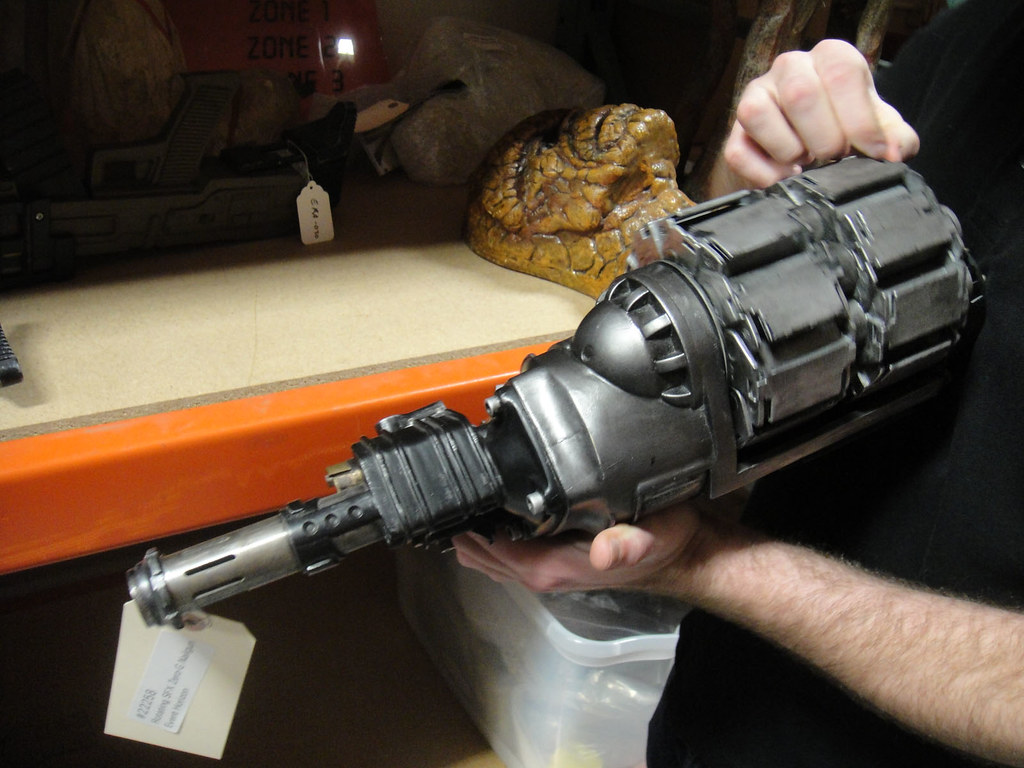
Nail guns are essential tools for carpenters. These devices quickly drive nails into wood and other materials, saving time and effort compared to manual hammering.
There are several types of nail guns for different tasks. Framing nail guns use large 3.5-inch nails for heavy-duty construction work. Roofing nail guns secure shingles and insulation boards.
For more detailed work, brad nailers are ideal. They fasten trim, moldings, and cabinetry with minimal visible marks.
Nail guns come in two main power types:
- Pneumatic: Powered by compressed air
- Cordless: Battery-powered for greater mobility
When choosing a nail gun, consider factors like:
- Nail size and type
- Power source
- Weight and ergonomics
- Depth adjustment features
- Safety mechanisms
Popular brands include DeWalt, Ryobi, and Craftsman. Cordless models offer convenience for job sites without easy access to power outlets.
Nail guns can significantly speed up carpentry work. However, proper training and safety precautions are crucial to prevent accidents and ensure accurate results.
Orbital Sander
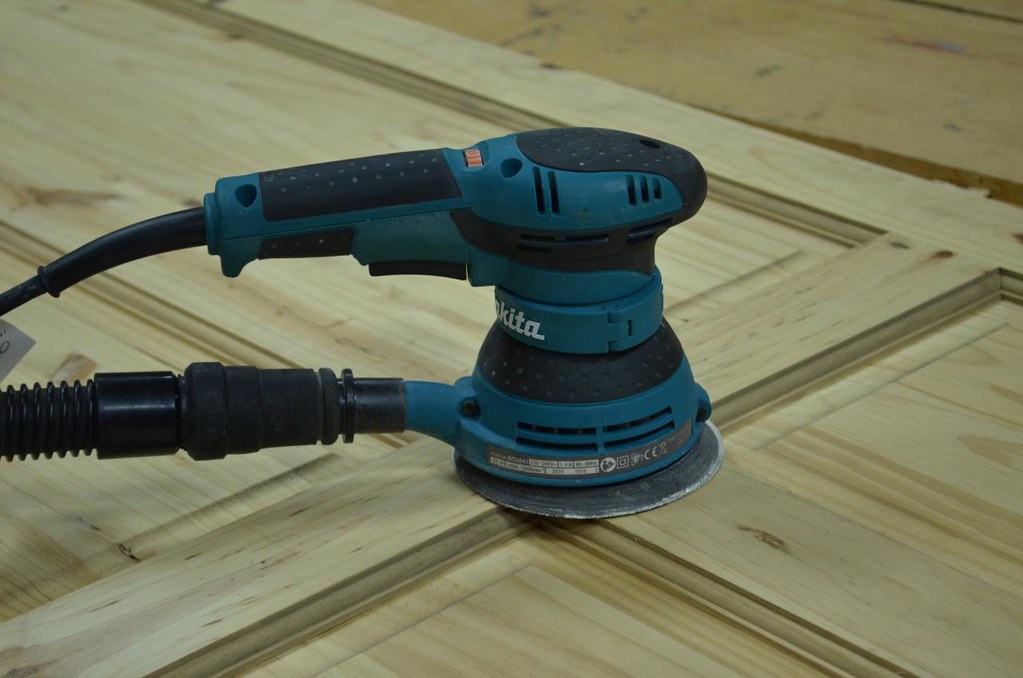
An orbital sander is a must-have tool for carpenters. It smooths wood surfaces quickly and efficiently.
This power tool uses a circular sanding motion to remove material and create a smooth finish.
Orbital sanders come in various sizes and styles. The most common type is the random orbital sander.
It moves in small circles while also rotating, which helps prevent swirl marks on the wood surface.
When choosing an orbital sander, consider these factors:
- Power source (corded or cordless)
- Sanding pad size
- Speed settings
- Dust collection system
Some popular orbital sander models include:
These tools are great for sanding large flat surfaces, removing paint or varnish, and preparing wood for finishing.
They work well on various materials, including wood, metal, and plastic.
Carpenters should always use proper safety equipment when operating an orbital sander.
This includes eye protection, a dust mask, and hearing protection if needed.
Router
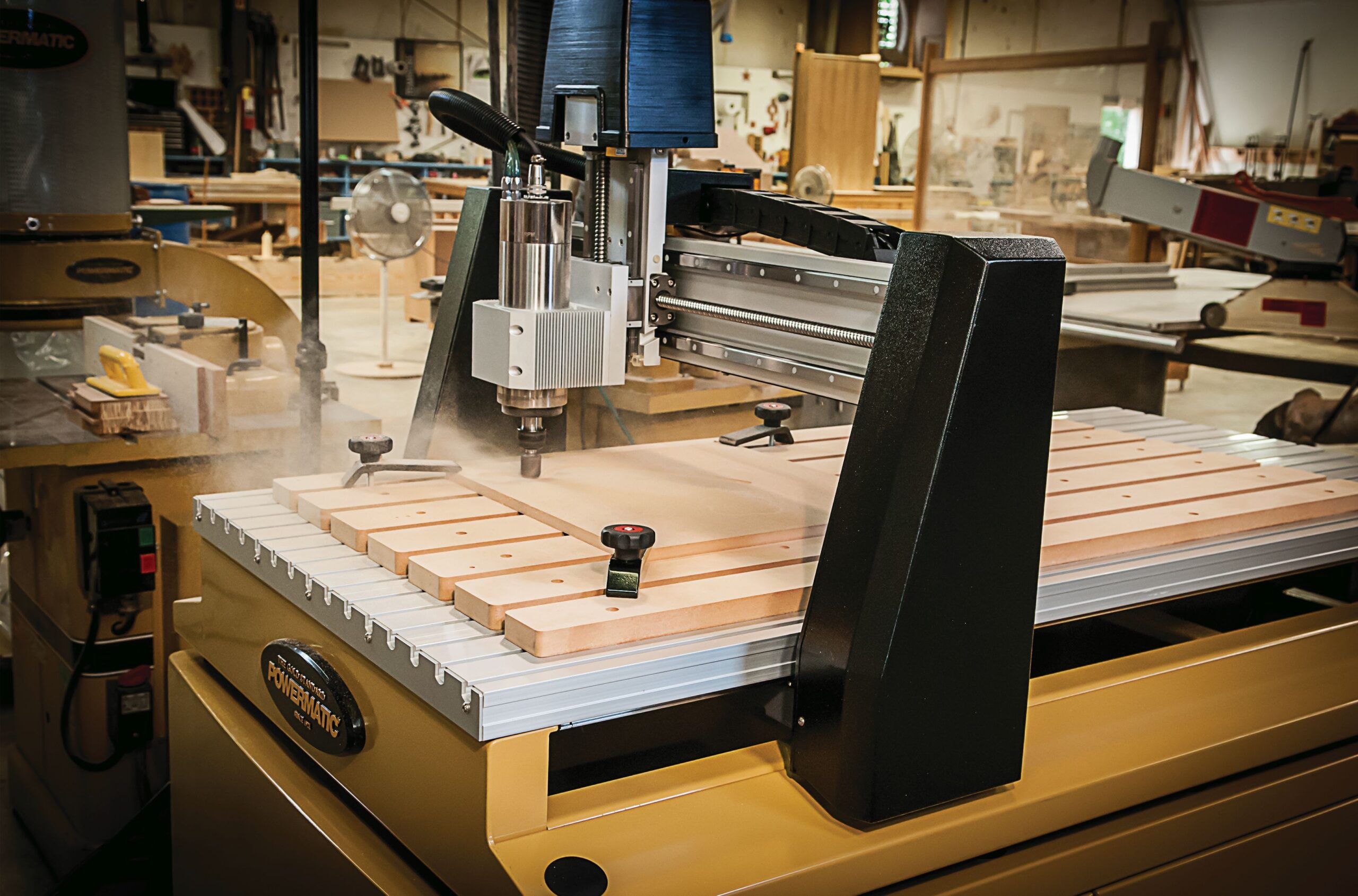
A router is an essential tool for carpenters. It shapes and cuts wood with precision.
Routers come in different types and sizes to suit various projects.
Fixed-base routers are great for edge work and making straight cuts. They offer stability and control.
Plunge routers allow for cuts that start in the middle of a workpiece.
Some key features to look for in a router:
- Power (measured in horsepower)
- Variable speed control
- Dust collection capability
- Ergonomic handles for comfort
Popular brands include Bosch, Festool, and Makita. The Bosch 1617EVSPK is a versatile option that comes with both fixed and plunge bases.
Cordless routers are becoming more common. They offer mobility and convenience on job sites. The Metabo HPT 36V is a powerful cordless model.
For beginners, a compact router or trim router might be a good starting point.
These are lighter and easier to handle. The Makita RT0701C is a well-regarded compact router.
When choosing a router, consider the types of projects you’ll be working on.
Think about the bit sizes you’ll need and the power required for your typical tasks.
Utility Knife
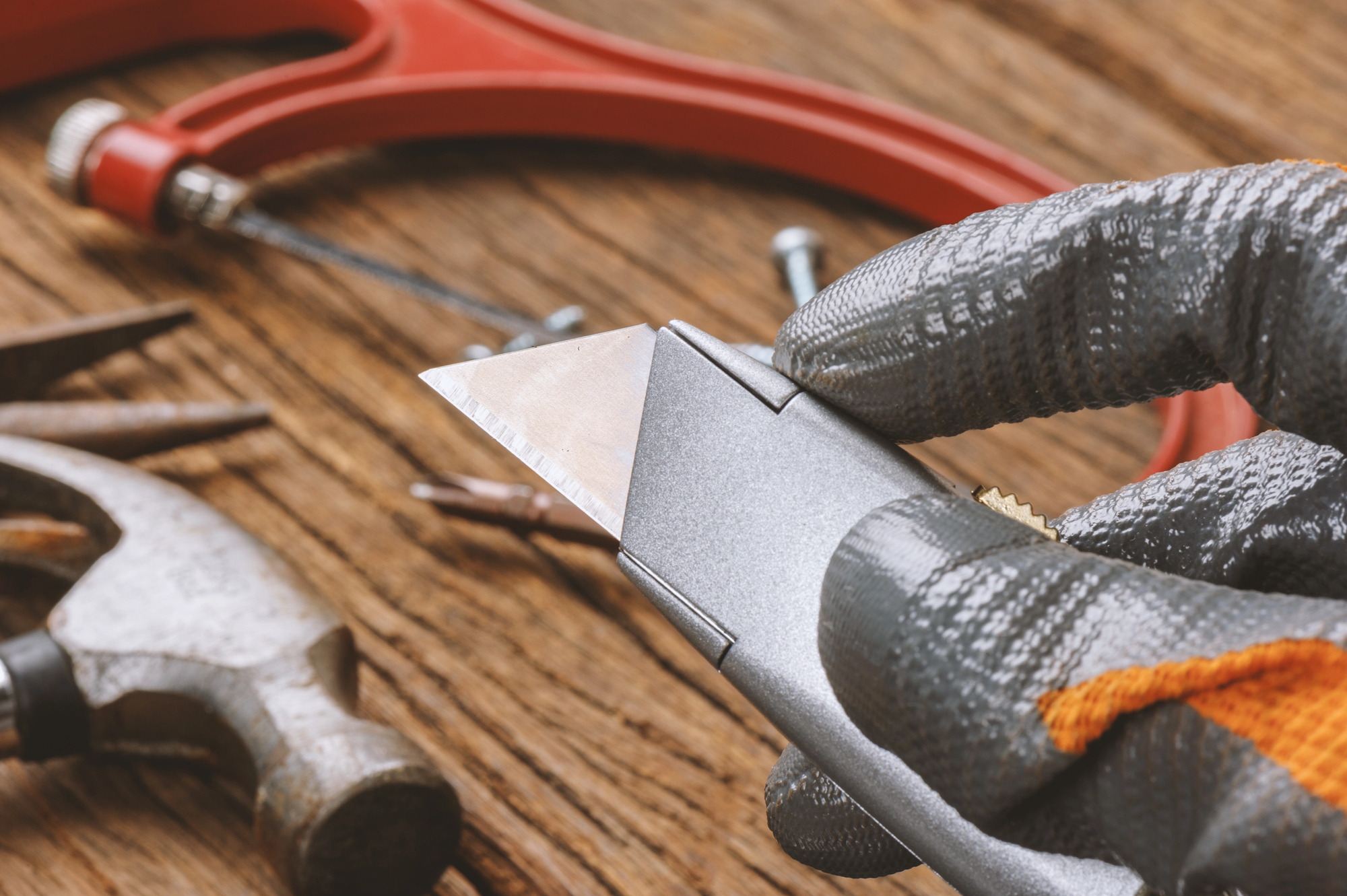
A utility knife is a must-have tool for carpenters. It’s versatile and can handle many cutting tasks on the job site.
Most utility knives have replaceable blades. This lets carpenters always work with a sharp edge.
Some models can store extra blades inside the handle for quick changes.
Retractable blade knives are common. The blade slides in and out of the handle for safety. Fixed blade knives offer more stability for certain cuts.
Carpentry uses for utility knives include:
- Scoring drywall
- Trimming wood shims
- Cutting carpet or vinyl flooring
- Sharpening pencils
Look for knives with comfortable grips. This helps prevent hand fatigue during long jobs. Some have rubber or textured handles for better control.
Safety features are important. Folding utility knives can be opened and closed with one hand. This is handy when working on ladders or in tight spaces.
Blade storage in the handle keeps spare blades handy. Some knives can hold up to five extra blades. This saves time looking for replacements.
Choose a utility knife that feels good in your hand. Test different styles to find the best fit for your work.
Workbench
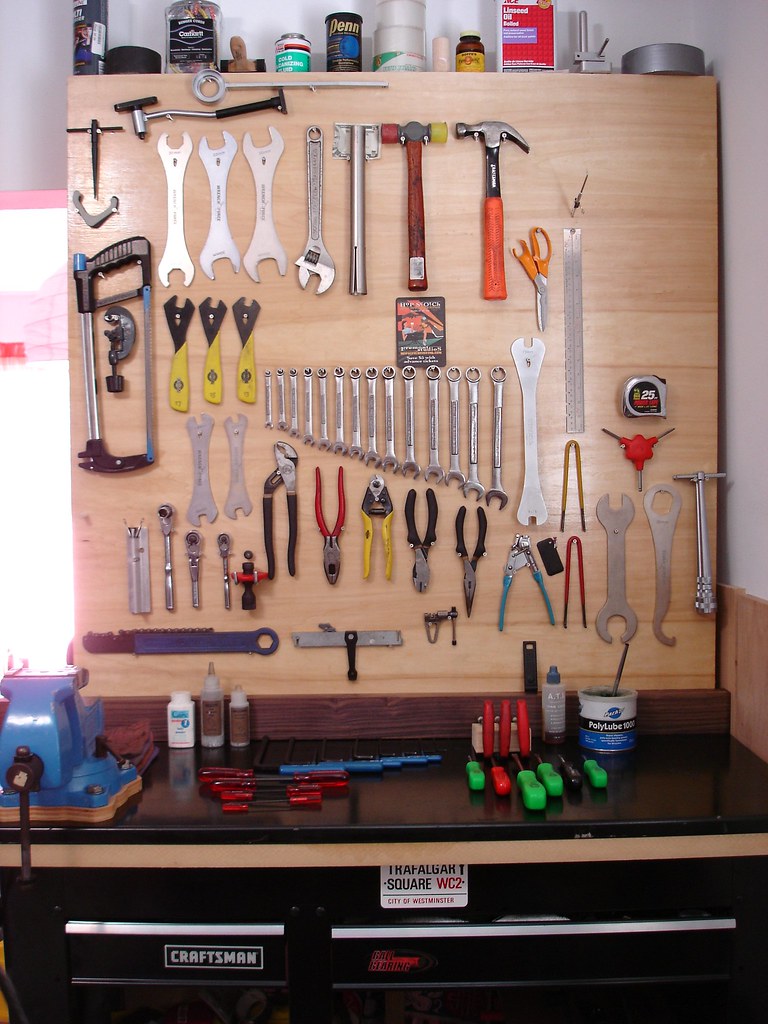
A workbench is a key tool for carpenters. It provides a stable surface for cutting, sanding, and assembling projects.
Workbenches come in various styles and sizes. Some are fixed, while others are portable.
Fixed benches offer stability for heavy-duty work. Portable ones allow flexibility to move between job sites.
Most workbenches have a flat top made of wood or metal. Many include vises for holding workpieces securely. Some also have storage drawers or shelves for tools.
The Worx Pegasus Folding Work Table is a popular portable option. It can support up to 300 pounds and doubles as a sawhorse.
For a more traditional choice, the Sjobergs Woodworkers Cabinetmaking Work Bench is highly regarded. It’s made of solid beech and features two vises.
When choosing a workbench, consider:
- Size and weight capacity
- Built-in storage options
- Portability needs
- Type of work to be done
A good workbench can greatly improve efficiency and precision in carpentry projects.




